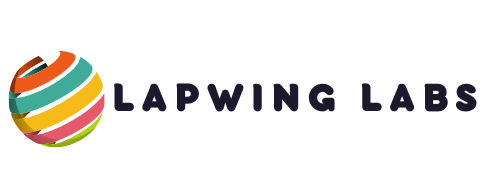Key Takeaways
- Understanding SASE and its importance in modern network security.
- Key components and benefits of SASE.
- How SASE addresses contemporary security challenges.
- Implementation strategies and best practices for SASE adoption.
- Real-world examples and case studies showcasing SASE deployment.
What is SASE?
Secure Access Service Edge (SASE) is an emerging framework combining network security functions with vast area network (WAN) capabilities to support modern enterprises’ dynamic, secure access needs. Unlike traditional security models, SASE represents a fundamental shift towards a cloud-native approach. This system ensures safe access to data and services regardless of the user’s location or device, accommodating the changing landscape of remote work and global business operations. The adoption of SASE is driven by the need for more efficient and reliable security models to handle modern networks’ increasing complexity and distribution. As companies move their activities to the cloud and embrace flexible work setups, the traditional security method based on perimeters loses its effectiveness.
Key Components of SASE
SASE integrates several core components, each contributing to a comprehensive security architecture. These components include:
- SD-WAN: Software-defined WAN (SD-WAN) optimizes network performance and connectivity by dynamically routing traffic based on real-time conditions.
- Secure Web Gateways (SWG): SWGs protect against web-based threats and enforce security policies for internet traffic.
- Cloud Access Security Brokers (CASB): CASBs provide visibility and control over data and users accessing cloud services.
- Firewall-as-a-Service (FWaaS): FWaaS offers scalable and manageable firewall capabilities delivered through the cloud.
- Zero-Trust Network Access (ZTNA): ZTNA enforces a zero-trust security model, where resource access is only allowed after rigorous verification procedures.
By integrating these components, SASE creates a robust security framework that supports modern enterprises’ diverse and dynamic needs. This integration simplifies network management and enhances security posture by providing a unified approach to securing access and data.
Benefits of Adopting SASE
Businesses adopting SASE can expect numerous advantages, such as improved security, better network performance, and increased scalability. By converging networking and security into a single cloud-based service, SASE offers significant cost savings and operational efficiencies. Furthermore, it provides an adaptable security model that meets the demands of remote work and cloud services.

One of SASE’s primary benefits is its ability to deliver consistent security policies across different environments. This consistency is vital as enterprises increasingly rely on a mix of on-premises, cloud-based, and hybrid environments. SASE guarantees consistent implementation of security policies, minimizing the chance of security weaknesses and vulnerabilities.
Additionally, SASE’s cloud-native architecture enables rapid scalability, allowing businesses to adapt to changing demands quickly. This feature is particularly beneficial for organizations experiencing growth or fluctuating workloads, as it provides the flexibility to scale security and networking resources as needed.
Addressing Security Challenges with SASE
Traditional security frameworks need help to handle the complexities of a modern, distributed workforce. SASE addresses these challenges by offering consistent security policies across various environments. For instance, it’s particularly effective in securing remote workforce setups and hybrid cloud environments, where traditional models often fall short. SASE’s ability to deliver security as a service is a game-changer for organizations with a distributed workforce.
SASE guarantees employees can work remotely securely by allowing access to applications and data no matter where they are located. This capability is crucial in today’s business environment, where remote work has become increasingly ordinary and necessary.
Popular Practices for Implementing SASE
Successful SASE implementation requires careful planning and execution. Start by assessing your current network and security posture. Develop a comprehensive strategy that includes phased deployment to minimize disruptions. Collaborate with experienced vendors to ensure your SASE solution aligns with your business objectives. Implement robust monitoring and management practices to maintain security efficacy. To ensure a smooth transition to SASE, organizations should begin with a thorough assessment of their existing network infrastructure and security measures. This assessment helps identify gaps or weaknesses that need to be addressed before adopting a SASE framework.
Additionally, it’s essential to involve key stakeholders in the planning process to ensure that the SASE solution meets the organization’s specific needs and objectives. Once the strategy is in place, a phased deployment approach can minimize potential disruptions to business operations. By gradually implementing SASE components, organizations can test and validate the solution at each stage, ensuring it operates as intended. This approach also allows for adjustments and optimizations along the way.
Real-World Examples of SASE in Action
Several organizations have successfully deployed SASE to enhance their network security and performance. For example, a global enterprise in the financial sector adopted SASE to support its multi-cloud strategies, resulting in improved security compliance and simplified network management. These real-world use cases highlight the transformative potential of SASE in various industries. By adopting SASE, the financial enterprise has addressed several critical challenges, including ensuring secure access to sensitive financial data and compliance with industry regulations. Implementing SASE components such as CASB and ZTNA gave the organization greater visibility and control over its multi-cloud environment.

Another real-world example involves a healthcare organization that leveraged SASE to enhance the security of its remote workforce. The organization faced challenges in ensuring secure access to patient data for remote employees while complying with strict healthcare regulations. By adopting SASE, the organization was able to implement a zero-trust security model, providing secure access to applications and data while maintaining compliance with healthcare standards.
Conclusion
As the digital environment keeps changing, organizations must embrace a SASE framework to secure their networks effectively. By integrating various security and networking technologies into a single cloud-native service, SASE promises to deliver unprecedented levels of protection and performance. Enterprises that embrace SASE will be well-positioned to successfully navigate the complexities of the modern digital era. In summary, SASE represents a significant advancement in network security, offering a comprehensive solution to the challenges faced by modern enterprises. With its ability to provide consistent security policies, scalability, and efficient management, SASE is poised to become a cornerstone of network security strategies in the years to come.



